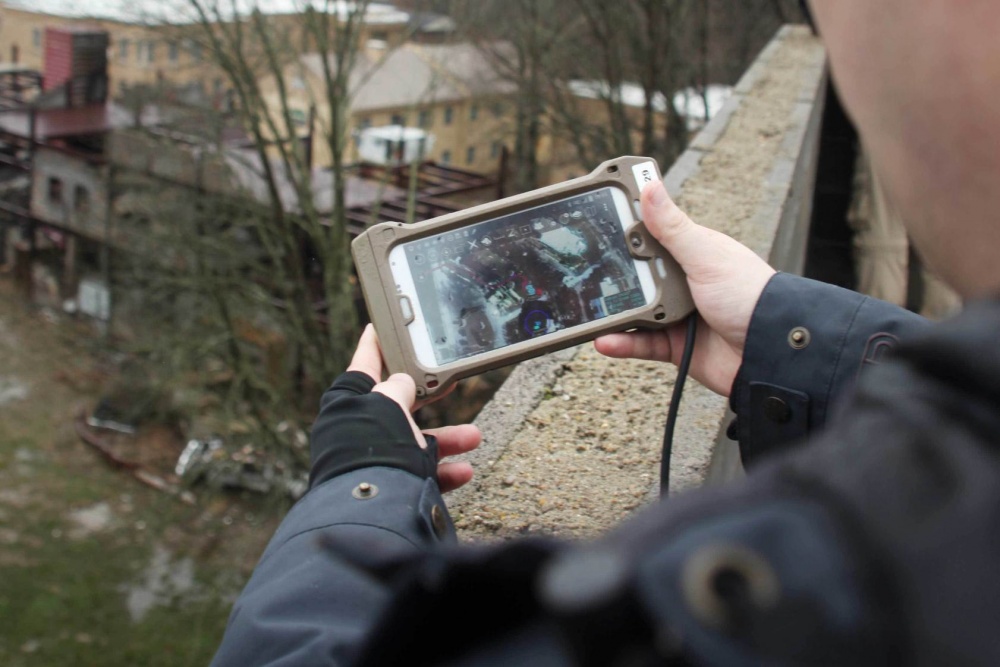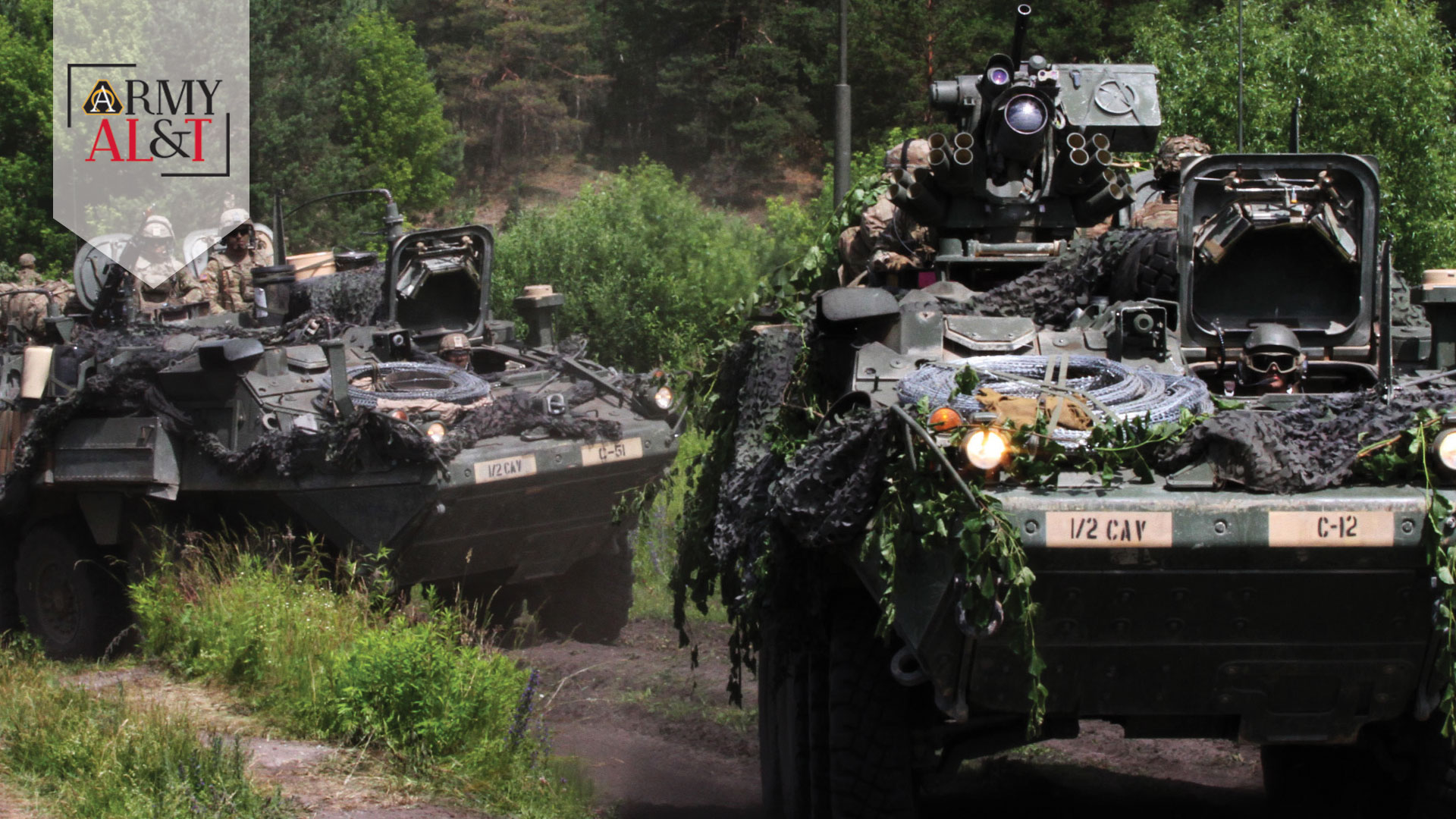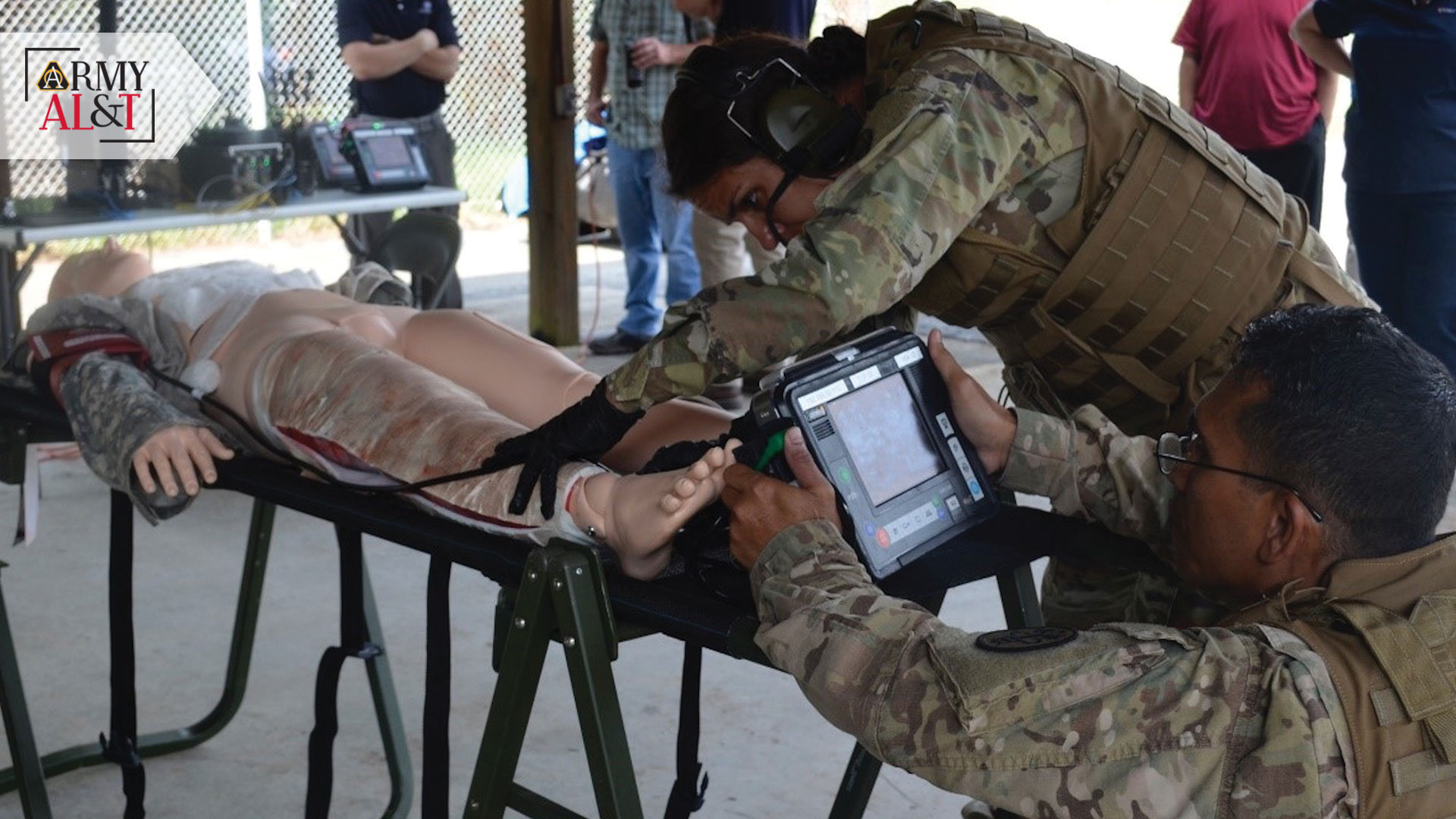A departing network PM discusses challenges and must-haves as the Army moves toward its one network vision.
by Amy Walker
Col. Greg Coile has been serving as the project manager (PM) for Tactical Network, assigned to the Program Office for Command, Control and Communications – Tactical (PEO C3T), for the last four years. His program office provides the Army’s tactical network, supporting commanders’ on-the-move mission command requirements from battalion to corps and their forward units on the battlefield. This line-of-sight and beyond-line-of-sight tactical network transport equipment enables global mission command and the exchange of data, voice and video from any location. In this Q&A, conducted before his change of charter in July 2019, Coile provides lessons learned in data sharing, network acquisition and the future of the Army’s tactical network.
Amy Walker: The first month you took office, in July 2015, you set out to implement a “One Network” mission and vision. Can you tell us more about the significance of that?
Coile: In the past, individual Army programs were singularly focused on their specific requirements, and due to a high operations tempo, network integration fell behind. The Army was delivering capability as quickly as possible to support evolving counterinsurgency operations during the war in Iraq and Afghanistan, and it was forced to complete total network integration later in the process. Now that we face a potential threat by a peer and near-peer adversary, network modernization efforts demand unification.
We can’t afford to look at the tactical network as my radio or your satellite terminal; we have to look at it as “our one network.” This one-network vision calls for organizations and stakeholders within PM Tactical Network, PEO C3T and the Army to view network modernization efforts through the same lens. It calls for them to work seamlessly and cohesively, blurring the lines of organizational boundaries to deliver innovative integrated capabilities more efficiently and effectively. No matter what organization you are assigned to, we are all working toward a common goal—a single, unified network that rapidly transports the critical data needed to increase lethality and win future wars.
We must view the entire network from the top and then optimize at the individual program levels to ensure integration and cohesiveness. Together we are working toward a common design and standards for our network transport layer to ensure that the development and acquisition of new technologies is integrated and unified.
One of the biggest challenges for the Army is its sheer size. It takes time to field capability across all three components—active Army, Army Reserve and the Army National Guard. So we have to be forward-thinking and look at future technologies years ahead of their availability, and ensure that we are collectively making wise decisions early on, so we don’t waste time and funding. As we start to lay the track for future trains not yet built, the one-network vision becomes even more critical.

PLENTY OF BANDWIDTH
These Transportable Tactical Command Communications terminals are one example of the many Army systems that rely on satellites to let Soldiers communicate and connect to the internet in remote locations. (U.S. Army photo by Amy Walker, PM Tactical Network/PEO C3T Public Affairs)
Walker: What are some of those new technologies you will be looking at in the next five years?
Coile: With the ever-increasing demand for bandwidth and application performance, our focus for the near future is to find the best solutions that take advantage of pivotal game-changing technologies, such as the low-Earth orbit (LEO) and medium-Earth orbit (MEO) satellite constellations, and integrate those capabilities into the tactical network of the future. LEO and MEO solutions will be a huge leap forward. There are some initial commercial MEO satellites already in use today. A few initial LEO satellites and prototypes have been launched, but that is expected to significantly increase as this technology continues to improve and more customers develop the ability to leverage it.
Compared to larger traditional geosynchronous satellites that most people are familiar with, these smaller LEO and MEO satellites travel closer to Earth and are launched in greater numbers. Each MEO constellation can contain more than a dozen MEO satellites, and LEO constellations could have more than 100 of the even smaller LEO satellites orbiting the globe. The natural resiliency that comes with having many satellites is important for the Army for transport diversity in a contested environment and helps improve the on-the-move capability of satellite communications. However, the most important benefits we anticipate will be the significant increase in bandwidth and the lower latency. The signals don’t have to travel as far to get to the satellite, so there is more radiated power available for communication. The reduced signal-transfer time will significantly improve the performance of the entire network, especially the application layer. These LEO and MEO constellations could also enable us to provide a huge increase in bandwidth compared to current network capability.
These solutions could also enable the Army to put more complex network functions and mission support capabilities in safe sanctuaries, pulling complexity out of the brigade and putting it in locations where it can be effectively maintained with more continuity. Additionally, the ground antennas will be much smaller, which increases unit deployability and mobility on the battlefield.
Our low- and medium-Earth orbit efforts are a perfect example of how the one-network vision comes into play. As an Army, we will have to look at the network holistically. We can’t continue to have five or six programs delivering their own various ground satellite terminals. The Army needs to make smart, overarching decisions early on and take advantage of economic quantities of scale in buying bandwidth on a low- or medium-Earth orbit constellation, supporting the force with one group of constellations as the primary and then alternates after that. If the Army makes some good business decisions with whatever constellations it buys, units wouldn’t have to request satellite time for a specific time; it would be available 24/7, just like your cellular network.
The Army is looking to take advantage of this technology in roughly the 2025-2027 timeframe, with initial prototyping projected for 2023. PM Tactical Network plans to conduct initial lab experiments and demonstrations this summer with new commercial off-the-shelf antennas.

LOW, MEDIUM AND HIGH
The Army is looking to increase the bandwidth available for satellite-enabled communications by using low- and medium-Earth orbit satellites as the technology to build them solidifies. Most satellites nowadays are geosynchronous and orbit high above the earth, about one-tenth of the way to the moon. Low-Earth orbit starts just above the Earth’s atmosphere. (NASA illustration by Robert Simmon)
Walker: What lessons have you learned in addressing current Army requirements?
Coile: As our adversaries change, operational concepts have to change, which drives requirement evolution. The enemy is always going to get a vote, so we have to maintain program agility and be able to adapt to changing requirements. That is one of the biggest lessons I’ve learned during my tenure as PM.
Our goal is to start off with a broader requirements scope and leverage laboratory and Soldier experimentation and feedback to narrow those requirements to inform full-fielding decisions. For example, the Army is piloting a new organizational design called the Expeditionary Signal Battalion – Enhanced (ESB-E) prototype, providing the 50th Expeditionary Signal Battalion (ESB) with varying options of tactical network equipment that are tailorable, scalable and more agile and expeditionary.
The major concept was not initially based on materiel, but on a change in the organizational structure and how the unit operates. PM Tactical Network, as the materiel provider, laid out equipment that could potentially support that broader concept. Where we previously had a standard-size satellite capability across the board, we now have a toolbox of equipment that allows units to tailor which communications equipment they will use based on particular missions.
The 50th ESB’s three companies returned their legacy at-the-halt tactical network transport equipment and will operate different sets of more expeditionary tactical network equipment, including small, medium and large satellite dishes and network baseband equipment packages, so the Army can determine the right characteristics needed to meet future ESB equipment requirements. We are using feedback directly from the units to shape future equipment solutions and force structure for all of the Army’s 24 expeditionary signal battalions.
Working with that one-network vision and teaming with the Army’s Network Cross-Functional Team, in just over eight months, we went from concept approval to fielding the first company and achieved the initial operating capability in early November 2018. We completed fielding to the remaining two companies a few months after that—a year in total from original concept to fielding completion. It’s all about agility, a different way for those expeditionary signal battalions to provide communications support. They can tailor their equipment to the mission, using communications equipment that is also scalable; so as initial, early-entry missions grow and the envelope unfolds, they can just add more components to support a larger set of users.
We took those concepts from the ESB-E and applied them across the board within our Integrated Tactical Network and security force assistance brigade efforts. In a similar way, we are also fielding innovative and evolving expeditionary tactical network and radio communication equipment packages to security force assistance brigades, which currently provide advise-and-assist support to Afghan security forces.
Walker: What types of requirements is the Army going after?
Coile: Being expeditionary, or rapidly deployable, has always been at the forefront, along with being more mobile on the battlefield once boots hit the ground. But as we look at potential near-peer threats, we also have to focus on signal path diversity [different network transport options], providing multiple line-of-sight and beyond-line-of-sight signal paths to increase operational flexibility and resilience from an electronic warfare and cyber perspective. We are also continuing to make equipment simpler to operate with a common look and feel, and reliable from a maintenance perspective. New expeditionary tactical network transport, like the inflatable Transportable Tactical Command Communications satellite terminals, can be operational in less than 30 minutes, giving units added operational flexibility and enabling them to sustain their own systems.
We also reduced system complexity and increased reliability of many of our legacy core on-the-move vehicle integrations, while reducing the size, weight and power to make them more expeditionary. These enhancements include the modernized Tactical Communication Node – Lite and Network Operations and Security Center – Lite and the Next Generation Point of Presence and Soldier Network Extension. These configuration items are now integrated on Humvees versus much larger tactical vehicles, so they can be easily air-transported.
Again, we are looking at things with a broader perspective and trying to expand and integrate capabilities across the board. Upcoming network operations tools will encompass more of our tactical network design so that signal officers can monitor, manage and defend the whole network at once, while providing the flexibility to tailor the network to mission, task and purpose.
Walker: You talked about program agility and the ability to adapt to changing requirements as a lesson learned. What other lessons have you learned during your service as PM for Tactical Network?
Coile: Another significant lesson learned is stakeholder management, keeping the Army informed about upcoming decision points. We always have the best and most efficient outcomes when we actively align with stakeholders and actively bring forward recommendations for the Army to make decisions. PM Tactical Network continually pushes and drives information updates on current and future efforts, leveraging forums like the Mission Command Council of Colonels and Mission Command General Officers Steering Committee.
I’ve found, in the past, that we don’t do as well during periods when we have fallen off this track and are executing our own missions without constantly providing feedback to the Army. When we all understand impacts and what hard decisions need to be made, they can be made efficiently and effectively without any surprises on either end. Again, it’s all about delivering our one network and working together across the Army as an informed, unified team.
For more information, go to the PEO C3T website at http://peoc3t.army.mil/c3t/ or contact the PEO C3T Public Affairs Office at 443-395-6489 or usarmy.APG.peo-c3t.mbx.pao-peoc3t@mail.mil.
AMY WALKER has been the public affairs lead at PM Tactical Network for the last 10 years, and was the public affairs lead at PEO C3T for the previous two. She has covered a majority of the Army’s major tactical network transport modernization effort, including Army, joint and coalition fielding and training events worldwide. She holds a B.A. in psychology, with emphasis in marketing and English, from the College of New Jersey.
















